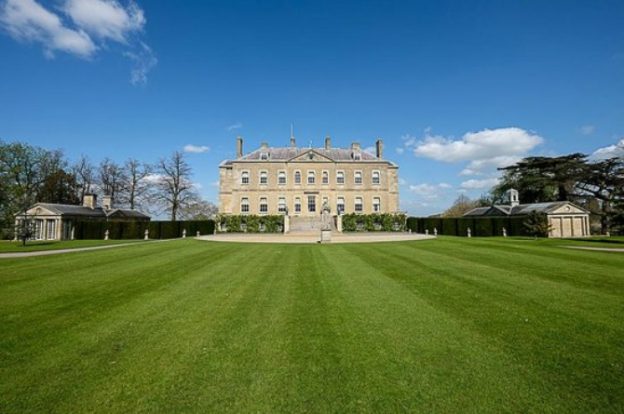On June 14th a group of members visited Buscot Park for a guided
walk around the house. We were met by the Assistant Curator who
began by giving us a very informative introduction to the origins of the
house, its various owners and their interests.
The original house was built between 1780 and 1783 by Edward
Loveden Loveden who took a great interest in the development of the
Thames and Severn, and the Wilts and Berks Canals. The house
remained in the family until 1859 when it was bought by an Australian
gold trader named Robert Tertius Campbell. His main enterprise was
the setting up of a distillery to create spirit alcohol from sugar beet. This
was not a success and when Campbell died in 1887 the estate was
heavily in debt.
In 1889 Buscot was sold to Alexander Faringdon, later the 1st Lord
Faringdon – a very successful financier who became a leading figure in
the City, specialising in the promotion of railways both in this country
and South America.
In 1898 he entered Parliament and was a strong supporter of Joseph
Chamberlain. His management of Buscot included improvements to the
pedigree stock.
Gavin Henderson the second Lord Faringdon was a member of the
Labour Party, a convinced pacifist who supported the Republican
cause in the Spanish Civil War and served with great courage in the Fire
Service during the 2nd World War.
During his time the house was regularly used as a meeting place for
prominent socialist politicians, but the Arts were also well
represented.The Faringdon Collection, which is to be seen today,
represents the combined arts collections of the first two Lords
Faringdon.
Our tour took us through the ground floor rooms beginning with the
main entrance which was furnished in the Egyptian style made popular
after the Battle of the Nile in 1798. We then moved into the Dutch room
which contained among others Buscot’s most famous painting,
Rembrandt’s portrait of Jan Six. Our guide talked to us in some detail
about the composition of the painting, which added to our enjoyment
and understanding.
The furniture included items from the Chippendale period with the
original gros-point needlework covers signed and dated 1771.
Our next stop was the dining room which held a particularly fine
Sheraton period table and a large set of red-leather covered dining
chairs originally commissioned by the 3rd Duke of Newcastle for
Clumber Park. We were also shown a pair of pictures made from
kingfisher feathers.
We entered the Saloon through fine mahogany doors which were a
survival from the original house. The room contained an exceptional set
of giltwood chairs and a settee all in their original silk upholstery –
almost identical to a suite dated 1808 to be seen at Fontainebleau.
The paintings in the Saloon consisted entirely of a series painted by
Burne-Jones illustrating the story of the Sleeping Beauty. Our guide
spent some time telling us about the symbolism in the pictures and the
history of their purchase and installation.
The final room we visited was the Drawing Room. The furniture dates
from the period immediately after the building of the house – the 1780s
and 1790s, and the paintings were Italian and represented the taste of
the 1st and 2nd Lords Faringdon.
In addition to our tour of the house we had a short time to enjoy the
gardens and grounds which were looking their best in the June
sunshine, and many of us were keen to return to see the rest of the
house and fully appreciate the gardens.

